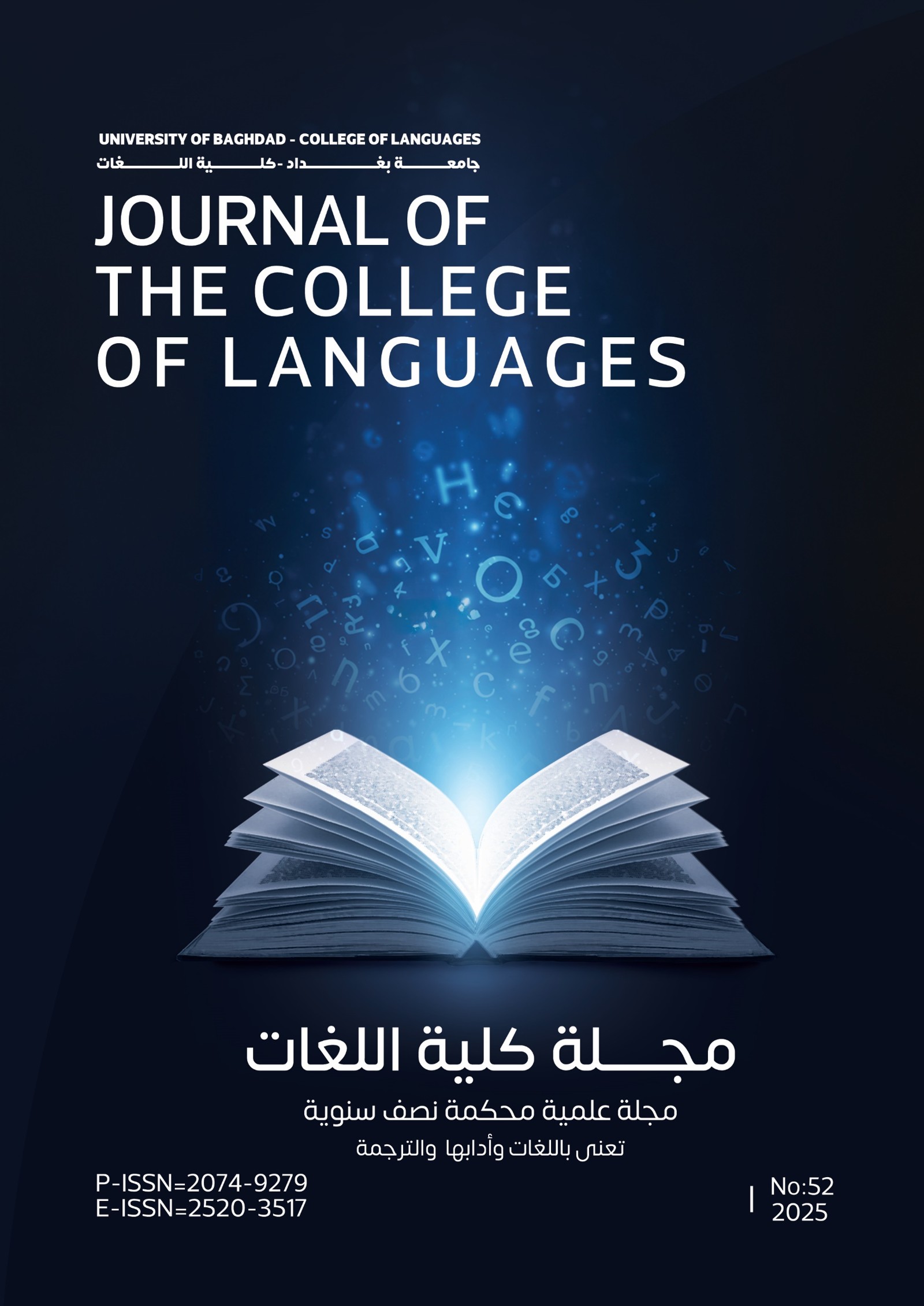The Use of the Definite article in the Ottoman Turkish Language in the Fourteenth and Seventeenth Centuries: Qaboos Namah and Mazaki Collection as a Model
'' Kabusnâme ve Mezâkî Divanı Örneğinde ''14. ve 17. Yüzyılarda Osmanlı Türkçesinde Harf-i Ta'rifin Kullanması Üzerine Bir İnceleme
DOI:
https://doi.org/10.36586/jcl.2.2023.0.47.0236Keywords:
Anahtar Kelimeler: Arapça Terkipler,İsim Tamlaması, Harf-i Ta'rifi , Osmanlı Türkçesi, Şems ve kamerHarfleri.Abstract
The Turks used the Ottoman Turkish language from the thirteenth century to the twentieth century. During this period and under the influence of Islamic civilization, a large number of words and structures were used from the Arabic and Persian languages, Therefore, many Arabic grammatical structures were used in the Ottoman Turkish language, such as the definite article simply because it was widely used.
The paper is concerned with the use of the Arabic definite article in the Ottoman Turkish language, and the aim of this contrastive study is to find out the similarities and differences between the two languages in terms of meaning and structure. Since linguistic studies depend on the practical side or applied approach, two works written in the Ottoman language were discussed: Qaboos Namah by Sheikh Sadr al-Din Oglu from the 14th century and Mazaki Poetry Collection by Suleiman Dede from the 17th century.
In our study, we showed how to use the definite article with words and phrases. The use of the definite article is used differently with words and phrases. This rule similarly applies to the Ottoman Turkish language. The Arabic definite article is also prefixed to the noun in prepositional phrases and pharses with articles. This rule is applicable in Ottoman Turkish where affixes are added to single words, noun and adjective phrases as well as nominative affixes when translated into Arabic.
Özet
Türk milleti 13. Yüzyıldan 20. Yüzyıla kadar Osmanlı Türkçesini kullandılar . Bu dönemde İslam medeniyeti etkisiyle Osmanlı Türkçesine Arap ve Fars dillerinden çok sayıda kelime ve terkipler girmiştir. Dolayısıyla Osmanlı Türkçesine Arapça gramer unsurları da girmiştir bunlardan en önemlisi sıkca kullanılanan harfi tâ'rifidir.
Araştırmamızda Osmanlı Türkçesinde Arapça harfi tâ'rifinin kullanımı ele alınmıştır. Bu çalışmanın amacı iki dil arasındaki anlam ve yapı bakımından benzerlik ve farklılıkları ortaya çıkarmak hedeflenmiştir. Osmanlı Türkçesi üç döneme ayrıldığı için on dördüncü ve on yedinci yüzyılları seçilmiştir ve harfi tâ'rifin kullanımındaki farklılığı belirtilmiştir. Bu çalışma da uygulamalı yönüne bağlı olduğu için Şeyhoğlu Sadrüddin'in ''Kabus- nâme Tercümsi'' adlı eser kitabı ile Süleyman Dede'nin '' Mezâkî Divanı'nın '' adlı divanı metinleri esas alınarak incelenmiştir.
Çalışmamızda harfi tâ'rifin kelime ve terkiplerle kullanılımını gösterilmiştir. Harfi tâ'rifin kelime ve terkiplerde kullanımı farklıdır. Harfi tâ'rifi Osmanlı Türkçesinde de mevcuttur. Bu duruma belirtilme adı verilir ve kelimelere ilgi veya yükleme eki getilirerek kurulur.
References
Adeskon, H. (1985). Turkish Grammar: Ramzi Press, Istanbul.
Al-Noqrat, A. M. (2003). Al-Shamil İn The Arabic Language: First Edition, National Book House, Benghazi.
Argeen, M. (2016) Lessons of The Ottoman Language: 28th Edition, Bogaz Eche Publications, Istanbul.
Argeen, M.(1958). Lessons of The Ottoman Language Ii: Faculty of Arts Press, Istanbul.
Banguoglu, T. (2007). Grammar of Turkish: Second Edition, Turkish Linguistic Association Publications, Ankara.
Bozkurt, F. (1999) Thelanguage of The Turks: Publications of The Ministry of Culture Of The Republic of Turkey, Ankara.
Chlen, M. (2006) Tools in The Arabic Language: Qalam Publications, Istanbul.
Churuto, M. M. (2014) Towards The Grammar of The Arabic Language: 17th Edition, Avan Publications, Istanbul.
Dogan, A. (2011). Translation of Qaboos Nama For Sheikh Oglu Sadruddin (Text , Dictionary , Index , Notes ,Fact Copy): Mavi Publications, Istanbul.
Fono O. E. I. P. (2006). Arabic Grammar: Fono Publishing House, Istanbul.
Golseven, G. (2004). The Ancient Anatolian Turkish Language: Gazi Press, Ankara.
Marmar, A. (1991). Mazaki (His Life, His Literary Character, The Critical Text Of The Diwan): Publications Of The Ataturk Cultural Center, Ankara.
Tekin, T., Olmez, M. ( 2003). Introduction Turkish Languages: Yildiz Publications, Istanbul.
Timurtash, F. K. (1981); Turkish Literature During History: Wilayat Publications, Istanbul.
Timurtash, F. K. (2008). Ntroduction to The Ottoman Turkish Language: 27th Edition, Alpha Publications, Istanbul.
Timurtash, F. K. (1999). Ottoman Turkish Grammar: 9th Edition, Publications of The Faculty of Arts, Istanbul University, Istanbul.
Turkish Cultural Research Institute Publications, (1979). Turkish World Handbook: Ankara.
Downloads
Published
Issue
Section
License
Copyright (c) 2022 Journal of the College of Languages (JCL)

This work is licensed under a Creative Commons Attribution 4.0 International License.








